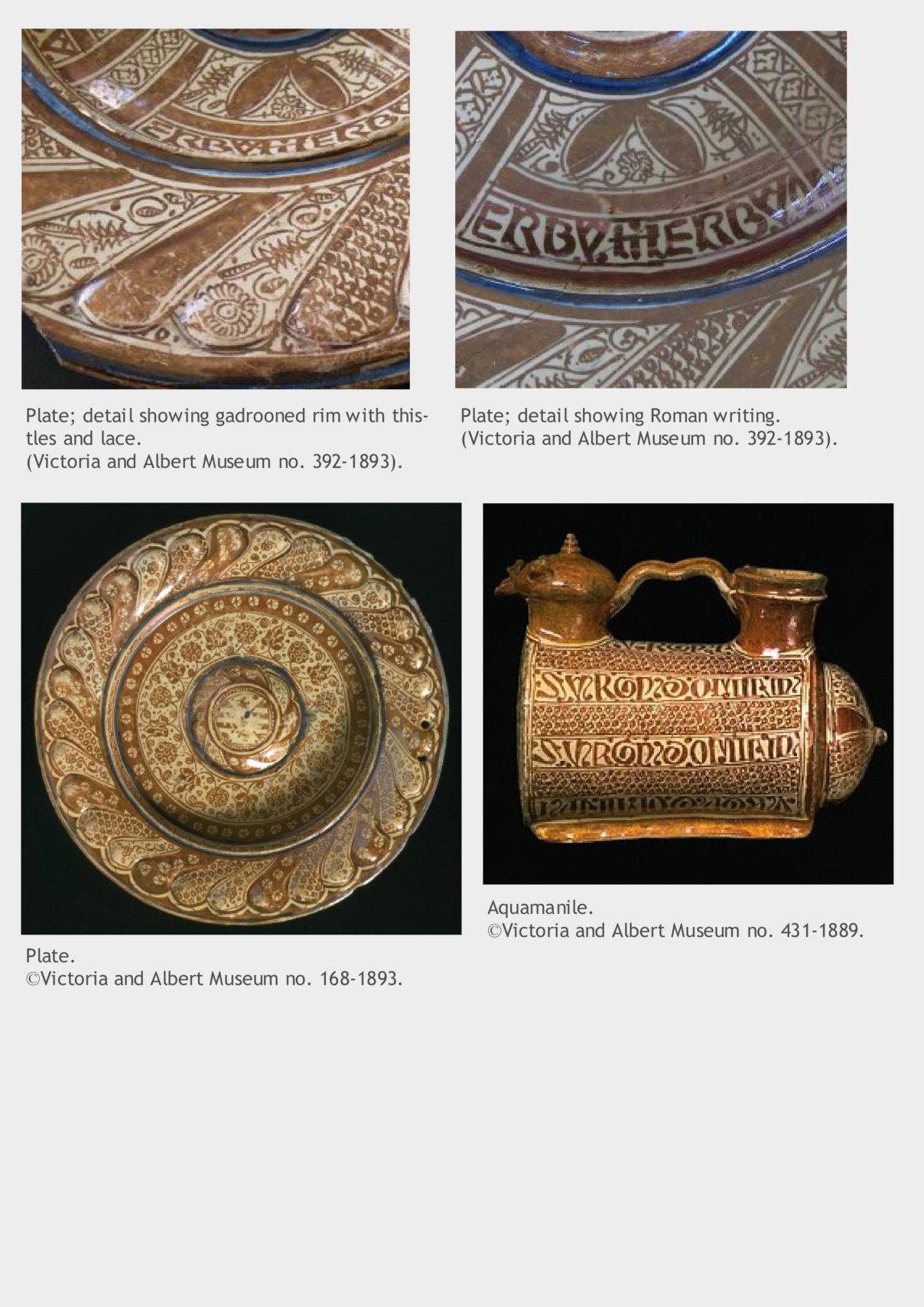Valencia Late
Valencia: Late lustrewares
Produced between c.1474 and 1600.
After the end of the 15th century and during the 16th century the traditional forms and decorative motifs of Late Valencian Lustreware fall under Renaissance influence. Surface decoration was restricted to lustre with a dense clustering of small and repetitive patterns. Very similar looking dishes were also produced in Seville.
New motifs were introduced such as musical notes, intertwined lace, radiated circles, eye-lashes, small flowers, thistle flowers and small chevrons, as well as epigraphic inscriptions such as IN PRINCIPIUM VERBUM ERAT and SURGE DOMINE, at first in clear Roman lettering but sometimes also illegible.
Pieces could now be moulded, rather than wheel-turned, and new surface effects were added such as raised cordons, sometimes beaded with ‘nail-head decoration’ (cabezas de clavos), large central bosses and gadroons. These kinds of decoration imitate the surface treatment on metal vessels, such as embossing or repoussé work.
The main forms produced were large plates, bowls, serving dishes and jugs.

